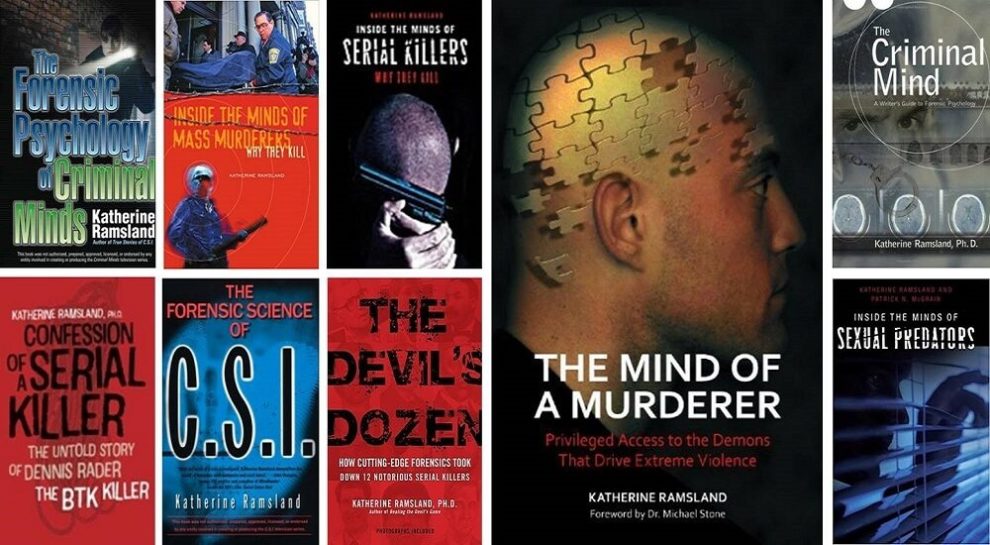Legislators in several states have filed bills aimed at abolishing capital punishment in recent months, as the number of men and women facing death sentences continues to drop nationally and conservative U.S. Supreme Court justices have expressed frustration over delays in carrying out executions.
Meanwhile, several prisoners are scheduled to die this month, including Donnie Edward Johnson, on death row in Tennessee for suffocating his wife in 1984, and serial killer Robert “Bobby” Joe Long, who murdered at least eight women in Florida in the early 1980s. While more than half of U.S. states and the federal government allow capital punishment, most executions between 1976 and 2017 occurred in five states — Florida, Missouri, Oklahoma, Texas and Virginia, according to the federal Bureau of Justice Statistics.
Men receive the overwhelming majority of death sentences. But more than a dozen women have been executed since 1976, when the U.S. Supreme Court lifted a moratorium on capital punishment.
While most death row prisoners die by lethal injection, many states allow other methods such as electrocution, hanging and firing squad. All executions in 2017, the most recent year for which the federal government provides data, were by lethal injection. A 2018 report from the U.S. Department of Justice offers a broad overview of the nation’s various capital punishment policies as well as a state-by-state tally of death row inmates and executions.
States that authorize capital punishment often post online rosters of their death row inmates. The roster for the Florida Department of Corrections, for example, shows there were 342 people on death row there as of early May 2019. In Idaho, there were eight.
Below, we’ve summarized 14 academic studies about capital punishment to help journalists ground their coverage and better understand the issue. This sampling of peer-reviewed research looks at capital punishment from multiple angles, including inmate experiences on death row, factors that affect sentencing and shifts in public opinion about the death penalty. We’ve also included several studies on prisoners’ last words.
Impact of the news media
Disentangling Victim Gender and Capital Punishment: The Role of Media Phillips, Scott; Haas, Laura Potter; Coverdill, James E. Feminist Criminology, 2012.
This study of capital punishment cases in Texas suggests that the Houston Chronicle’s news coverage of murder cases influenced prosecutors’ decisions about whether or not to seek the death penalty.
The researchers analyzed the criminal cases of 504 defendants indicted for capital murder in Harris County, Texas between 1992 and 1999. They discovered that 139 of the victims were female, 31 of whom were subject to “sexual degradation,” meaning they were either raped or raped and also “disrobed.” They also examined the newspaper’s coverage of these cases.
The researchers find that “sexual degradation shapes media coverage.” Cases that did not involve sexual degradation prompted 2.8 news articles each, on average, prior to the defendant’s indictment. If a victim was raped but not disrobed, the case generated an average of 4.4 articles. If the victim was raped and disrobed, the newspaper published an average of 14.7 articles about each case.
The analysis, according to the authors, shows that the district attorney “sought death in 9 of the 19 sexual degradation cases that generated 0 to 3 newspaper articles, compared to 11 of the 12 sexual degradation cases that generated 4 or more newspaper articles. Thus, sexual degradation alone — in the absence of intense media coverage — does not necessarily move the DA [district attorney] to seek death. But sexual degradation cases that catch the eye of the media also catch the eye of the DA. The data strongly suggest that the DA is aware of, and responsive to, media coverage of pending capital murder cases.”
Factors affecting sentencing
How Defendants’ Legal Status and Ethnicity and Participants’ Political Orientation Relate to Death Penalty Sentencing Decisions
Alvarez, Mauricio J.; Miller, Monica K. Translational Issues in Psychological Science, 2017.
For this study, researchers sought to determine whether U.S. adults would punish a criminal defendant differently based on characteristics such as the defendant’s race, ethnicity and immigration status. The researchers recruited 300 U.S. citizens to read a 2,500-word summary of a mock murder trial and then asked them to decide whether to sentence the mock defendant, already found guilty of murder, to death or life in prison. Each participant also answered questions aimed at measuring their political orientation and other factors that might influence their decision-making, including their level of anti-immigrant bias.
Overall, survey participants gave harsher sentences to immigrant defendants than they did to defendants described as being born in the U.S. But sentencing decisions were influenced by participants’ political orientation. “More liberal and middle of the road participants viewed documented immigrant defendants as more deserving of the death penalty, compared to U.S. born defendants,” the authors write. On the other hand, more conservative participants “viewed documented immigrant defendants as being similarly deserving of the death penalty compared to U.S. born defendants.”
The researchers note that when they compared documented immigrant mock defendants with those who were naturalized citizens, “more liberal participants viewed documented immigrant defendants as more deserving of the death penalty than naturalized citizen defendants, while middle of the road and more conservative participants viewed both defendants as being similarly deserving of the death penalty.”
Possibility of Death Sentence Has Divergent Effect on Verdicts for Black and White Defendants Glaser, Jack; Martin, Karin D.; Kahn, Kimberly B. Law and Human Behavior, 2015.
Researchers conducted a national, web-based survey of a random sample of 276 U.S. adults to determine whether respondents would choose harsher sentences for black or white defendants on trial for murder. Respondents were asked to read a 1,185-word, four-page trial summary outlining the facts of a mock murder case, which was based on transcripts from actual murder trials in California. Survey participants — half were women and the vast majority were white — had to choose to convict or acquit the defendant.
Participants were given a version of the trial summary, which differed in two ways. In some versions, the defendant faced a death sentence while in others, he faced life in prison without the possibility of parole. Defendants were given “first names stereotypically associated with Blacks (Darnel, Lamar, Terrell) or Whites (Andrew, Frank, Peter).”
The main takeaways: Participants chose to convict nearly 73.9% of defendants whose names were associated with black men and 60.9% of defendants with names associated with white men. When study participants read the version of the case featuring a defendant facing a death sentence, they chose to convict 80% of defendants with black-sounding names and 56.5% of defendants with white-sounding names.

The authors write that their findings “indicate that, not only are potential jurors influenced by punishment severity, but defendant race alters how they are swayed — with deleterious outcomes for Black defendants. The demonstration that sentence severity, specifically, the possibility of a death sentence, has a qualitatively different effect on verdicts for ostensibly Black and White defendants is novel.”
Predictors of Death Sentencing for Minority, Equal, and Majority Female Juries in Capital Murder Trials Richards, Tara N.; et al. Women & Criminal Justice, 2016.
This study looks at the link between jury decisions in capital offense cases and the sex composition of juries in North Carolina between 1977 and 2009. It finds that juries with an equal number of male and female members “were associated with a 65% increase in the odds of recommending the death penalty.” When juries had seven or more female members, the odds of recommending a death sentence fell by 32%. The researchers did not find a statistically significant relationship between male-majority juries and sentencing decisions.
No Sympathy for the Devil: Attributing Psychopathic Traits to Capital Murderers Also Predicts Support for Executing Them Edens, John F.; et al. Personality Disorders: Theory, Research, and Treatment, 2013.
The personality traits that defendants exhibit during capital murder trials influence whether or not laypeople think they deserve the death penalty, this study suggests. “A defendant’s perceived lack of remorse in particular was influential, although perceptions of grandiose self-worth and a manipulative interpersonal style also contributed incrementally to support for a death sentence,” the authors write.
Researchers examined data from three studies — two published and one unpublished — to determine whether defendants’ personality traits affect attitudes about capital punishment. In all three studies, students recruited from a university in the southern U.S. were asked to choose a criminal sentence for a mock defendant after reading a summary of a mock murder trial. The higher the students rated the defendant on a “global psychopathy” scale, the more likely they were to choose a death sentence.
The researchers write that the results “inform how perceptions of socially undesirable personality traits relate to attitudes about the sanctioning of criminals, particularly murderers facing a possible death sentence. Our findings converge with other research … suggesting that perceived lack of remorse carries considerable weight in terms of influencing legal decision-makers.”
Public support for capital punishment
Racial-Ethnic Intolerance and Support for Capital Punishment: A Cross-National Comparison Unnever, James D.; Cullen, Francis T. Criminology, 2010.
This study finds that citizens of several European countries, including France, Great Britain and Spain, were more likely to support capital punishment if they were intolerant of racial and ethnic minorities.
The researchers analyzed a variety of surveys conducted in European nations between 1992 and 2006.
The main takeaway: “In France, Belgium, the Netherlands, East and West Germany, Italy, Luxembourg, Denmark, Great Britain, Greece, Spain, Finland, Sweden, Austria, and Canada, individuals who were racially and ethnically intolerant — expressing animus toward immigrants — were significantly and substantively more likely to support the death penalty. In two countries, Portugal and Ireland, racial-ethnic intolerance did not positively predict support for either the death penalty or more general punitive attitudes,” the authors write.
The researchers also find that European youth with anti-immigrant attitudes were more likely to support capital punishment.
To Execute or Not to Execute? Examining Public Support for Capital Punishment of Sex Offenders Mancini, Christina; Mears, Daniel P. Journal of Criminal Justice, 2010.
In this study, researchers examine whether the public agreed with a move by states in the 1990s to extend the death penalty to convicted sex offenders.
The researchers find, based on an analysis of a 1991 national telephone poll of 1,101 people, that the public’s views on punishing sex crimes with the death penalty depended on whether the victim was an adult or child. According to the opinion poll, conducted by the Minneapolis Star Tribune, 27% of Americans supported capital punishment for offenders who raped an adult while 51% favored it for offenders who sexually abused a child.
The researchers also find that people who believe sex offenders are prone to recidivism and that the criminal justice system does not do enough to address sex crime were more likely to support the death penalty for sex offenders.
“Vicarious experiences with sexual victimization — that is, knowing someone who was victimized — was associated with decreased support for executing such offenders,” the authors write.
As a crime deterrent
What Do Panel Studies Tell Us About a Deterrent Effect of Capital Punishment? A Critique of the Literature Chalfin, Aaron; Haviland, Amelia M.; Raphael, Steven. Journal of Quantitative Criminology, 2013.
Researchers analyzed multiple published studies to try to gauge how effectively capital punishment deters homicide. What they learned: the academic literature is inconclusive.
“First, we believe that the empirical research in these papers is under-theorized and difficult to interpret,” the authors write. “Second, many of the papers purporting to find strong effects of the death penalty on state-level murder rates suffer from basic methodological problems.”
The authors also note the difficulty of studying the effects of the death penalty, considering states generally execute only a few people per year.
Assumptions Matter: Model Uncertainty and the Deterrent Effect of Capital Punishment Durlauf, Steven N.: Fu, Chao; Navarro, Salvador. American Economic Review, 2012.
In this article, researchers look at some of the reasons why it’s still unclear whether capital punishment policies deter homicide. They examine how previous researchers’ assumptions about homicide influenced estimates for the number of lives saved when a convicted murderer is executed.
The authors’ explanation is technical and focuses on statistical modeling. “Depending on the model, one can claim that an additional criminal executed induces 63 additional murders or that it saves 21 lives,” the authors write. “This demonstrates the ease with which a researcher can, through choice of modeling assumptions, produce evidence that each execution either costs many lives or saves many lives.”

Inmate experiences on death row
Suicide on Death Row Tartaro, Christine; Lester, David. Journal of Forensic Sciences, 2016.
While death row inmates in the U.S. are supposed to be closely supervised, they are more likely to commit suicide than male prisoners who aren’t serving death sentences. They also are more likely to commit suicide than males over age 15 who are not incarcerated, according to this study.
From 1977 to 2010, there were an average of 2.74 suicides a year on death row. The average suicide rate was 129.70 deaths per 100,000 death row inmates. For state prison inmates not facing execution, the suicide rate was 17.41 deaths per 100,000 inmates, on average. And for males over age 15, it was 24.62 deaths per 100,000 people.
The researchers note that suicide rates for death row inmates and males in the general prison population have fallen gradually since the late 1970s. They also note that the suicide rate among death row inmates is lower during years when a greater number of death row inmates are executed.
Wasted Resources and Gratuitous Suffering: The Failure of a Security Rationale for Death Row Cunningham, Mark D.; Reidy, Thomas J.; Sorensen, Jon R. Psychology, Public Policy, and Law, 2016.
This study focuses on the behavior of death row inmates who were “mainstreamed” into the general prison population at a high-security prison in Missouri between 1991 and 2015. Elsewhere in the U.S., prisoners with death sentences tend to be segregated from other prisoners and placed in “supermaximum confinement” at a high cost to taxpayers.
The key takeaways: Over the 25-year period, not only were death row inmates as likely as or less likely than other prisoners to be involved in “assaultive misconduct,” but rates of violence among death row inmates were lower after they were mainstreamed than they had been when prisoners were segregated on death row.
“Because the CP [Capital Punishment] inmate has a limited life expectancy, he is arguably particularly motivated to make those remaining days as positive for himself as possible,” the authors write. “Rather than having ‘nothing to lose,’ the CP inmate may pragmatically recognize he has more at stake in each day and thus more to gain or lose by his conduct.”
Last words of death row inmates
A Review on Time Perception of Death Row Inmates’ Denials in Their Last Statements in the Context of Forensic Linguistics: The Sample of Texas Huntsville Unit Uysal, Basak. Journal of Death and Dying, 2018.
This study examines the last statements of 537 death row inmates executed in Texas between 1982 and 2016. A key takeaway: Seventy inmates used their final words to deny they committed the crimes with which they’d been convicted while 108 chose not to say or write anything at all. “The main topics reflected by the denier offenders are defense, love, wishing, and sadness, and the topics reflected less are atonement, forgiveness, and ending,” the author writes.
Those who gave last statements used 102 words, on average. Inmates who denied their crimes used an average of 138 words. The shortest statement is one sentence while the longest comprises 134 sentences. The most educated inmates “talk less and use fewer words.”
The Functional Use of Religion When Faced with Imminent Death: An Analysis of Death Row Inmates’ Last Statements Smith, Ryan A. The Sociological Quarterly, 2018.
This analysis of death row inmates’ final statements focuses on the use of religious words and phrases. This researcher also examined the last words of the 537 death row inmates sentenced to die in Texas between 1982 and 2016. Of the 429 inmates who gave oral last statements, more than 6 out of 10 expressed themselves using religious sentiments, which “challenge the stereotyped image of the hardened, unrepentant death row inmate,” the author writes.
The author states that the study “deepens our understanding of the manner in which death row inmates use religion to cope with imminent death.” But he also points out that some people may question the authenticity of their final words, which are “solicited under artificial circumstances because statements are made moments before execution when the inmate is strapped to a gurney in front of witnesses.”
Of note: Inmates’ final statements became more religious after 1996, when Texas began allowing victims’ families and close friends to witness executions and hear last statements.
Forgiveness, Spirituality and Love: Thematic Analysis of Last Statements from Death Row, Texas (2002–17) Foley, S.R.; Kelly, B.D. QJM: An International Journal of Medicine, 2018.
For this study, researchers examined the final statements of the 70 inmates executed in Texas between 2011 and 2017, 61 of whom gave oral last statements. All Hispanic inmates made last statements, compared with 92% of black inmates and 70.8% of white inmates. On average, prisoners had less than 10 years of education and their median age was 40.5 years.
The most common theme in statements was love followed by spirituality, the researchers find. Third most common was an apology to the victim’s family, which was included in 30% of statements. Meanwhile, 16% of prisoners apologized to their own families, 11% asked for forgiveness and 10% denied committing the offense for which they were executed. Nobody quoted poetry or literature, the researchers note.
Less than half as many inmates asked for forgiveness in their final statements as had done so in earlier years. Between 2002 and 2006, according to the study, 32% of prisoners asked for forgiveness before their execution. Between 2006 and 2011, 25% did.
Denise-Marie Ordway, Journalist’s Resource. This article is republished from the Journalist’s Resource under a Creative Commons license. Read the original article.
You Might Also Like














































W o w..interesting